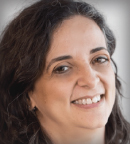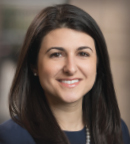With out-of-pocket costs of cancer care exceeding $21 billion in 2019, financial toxicity among patients and their families in the United States has become too prevalent to ignore. In fact, more than 50% of working-age survivors now report at least one material, psychological, or behavioral domain of financial hardship.
During the 2022 ASCO Quality Care Symposium, a panel of experts explored multilayered solutions to address financial toxicity. These solutions focused on innovative approaches to identify individuals who are at risk for financial toxicity, new models of care that integrate financial hardship screening and the delivery of financial navigation services, and the integration of resources within the community and health-care system to better meet the needs of patients and their families.
Dedicated Screening Tool for Financial Hardship
Maria Pisu, PhD, Professor of Medicine at O’Neal Comprehensive Cancer Center, University of Alabama at Birmingham, underscored the need for a dedicated screening tool for financial hardship.1 Over approximately 15 months, Dr. Pisu and colleagues screened 364 women with tools to identify both financial hardship and distress.

Maria Pisu, PhD
Using the National Comprehensive Cancer Network (NCCN) Distress Thermometer, 32% of patients tested positive for high distress, but just 15% were shown to have financial problems. With the comprehensive financial hardship screening, on the other hand, researchers identified significantly more patients as having financial difficulties. Approximately 32% of patients indicated they had trouble with at least one item on a financial-needs checklist, which included medications, upfront payments for visits, copayments, insurance, and medical bills.
“Among patients who had at least one financial need, just 40% had a high distress score, so if we used distress screening alone, we would miss approximately 60% of patients,” said Dr. Pisu, who noted these patients were mainly referred to a social worker or a financial counselor. “Clearly, we need another tool to screen for financial hardship. Additional work is also needed to ensure continuity of support to patients who have a financial need,” she added.
Implementing Financial Hardship Screening in a Cancer Center
According to Samilia Obeng-Gyasi, MD, MPH, a breast surgical oncologist at The Ohio State University, Columbus, strategies are needed to increase awareness about social determinants of health questions in the electronic medical record (EMR), and the EMR needs to be optimized to easily retrieve these data.2 She shared results from a study to identify patients with breast cancer, lung cancer, or hematologic malignancies experiencing financial hardship that took place within three clinics at her institution.

Samilia Obeng-Gyasi, MD, MPH
As Dr. Obeng-Gyasi explained, the EPIC software has a wheel of social determinants of health with 10 domains, including smoking, alcohol use, social connections, transportation, and food insecurity. The investigators focused on the financial hardship domain with the following question: “How difficult is it for you to pay for the very basics like food, housing, medical care, and heating?” Patients who responded “somewhat hard,” “hard,” or “very hard” were then referred to a social worker for additional workup.
Between November 2020 and November 2021, Dr. Obeng-Gyasi and colleagues screened approximately 95% of patients seen in their health system (n = 4,732 patients), with 3% refusing to answer the question. Of those who were screened, 10% reported financial hardship. When analyzed by organ site, patients with lung cancer and hematologic malignancies were more likely to report financial hardship than those with breast cancer. Patients reporting financial hardship were more commonly Black than White, slightly younger overall, and tended to be on Medicaid.
In the second half of the study, Dr. Obeng-Gyasi and colleagues updated their workflow to capture the urgency of financial concern. Patients who told the intake nurse they wanted to address their financial hardships immediately were seen by a social worker on the same visit, whereas those who did not require urgency were contacted the following week. According to Dr. Obeng-Gyasi, the updated workflow doubled the number of patients who were being seen by social work and significantly mitigated the number of patients who were lost to follow-up.
“We need strategies to increase awareness of the wheel of social determinants of health,” she said. “Many providers with a similar EMR may not be aware of it or know how to utilize it. It was also important to engage the nurse manager, social worker, and patient navigator prior to beginning this study, because they were very good advocates,” she added.
Operationalizing Financial Toxicity Interventions
Emeline Mariam Aviki, MD, MBA, a surgeon at Memorial Sloan Kettering Cancer Center (MSK), New York, shared data from a study of more than 89,000 patients who were treated between 2016 and 2018 at her institution.3 After defining financial toxicity as “having a payment issue, utilizing an MSK financial assistance program, or being referred to social work due to a specific financial concern,” the researchers found that 25% of patients experienced objective financial hardship over this 2-year period.

Emeline Mariam Aviki, MD, MBA
According to Dr. Aviki, most of these patients (more than 14,000) met the criteria by having payment issues, which tended to occur approximately 1 year after the initial visit. However, the researchers also found that 78% of these patients had never been referred to the Patient Financial Services Group or applied for aid.
“Our patients were facing affordability issues, but they were not being identified or referred,” said Dr. Aviki, who noted there was no direct route to send patients to patient financial services. “The first thing we did was create a financial toxicity–specific referral and have providers indicate whether it was urgent or routine.”
The screening involved an assessment, which included one validated financial toxicity questionnaire administered digitally through the patient portal, starting with the second visit.
The researchers conducted a total of 33,000 screenings and received 13,548 responses (41% response rate). Among those who responded, 53% of patients screened positive, but 69% of those who screened positive elected not to hear from patient financial services. Approximately 1,880 referrals were sent to patient financial services over 12 weeks, which is a 10-fold increase from baseline.
“For those patients who screened positive but preferred not to be contacted by financial services, our plan is to educate them,” said Dr. Aviki. “We developed a one-page educational document that lists all the resources available to them at MSK. We also plan to study this population to learn the reasons they’ve chosen not to be contacted,” she added.
Since the start of the study, the Patient Financial Services Group has linked patients to approximately $1.2 million in copay assistance. Dr. Aviki and colleagues are working on ways to quantify both the financial and clinical impacts of these patient interventions. “This approach requires a lot of institutional buy-in—everyone must be on board—but systematic screening and referral for financial toxicity are feasible,” she concluded.
DISCLOSURE: Dr. Pisu, Dr. Obeng-Gyasi, and Dr. Aviki reported no conflicts of interest.
REFERENCES
1. Pisu M: The added value of a dedicated screening tool to identify patients with financial hardship. 2022 ASCO Quality Care Symposium. Presented September 30, 2022.
2. Obeng-Gyasi S: Implementing financial hardship screening in a comprehensive cancer center: What worked and what failed. 2022 ASCO Quality Care Symposium. Presented September 30, 2022.
3. Aviki EM: A multidisciplinary approach to operationalizing financial toxicity interventions: The MSK Affordability Working Group. 2022 ASCO Quality Care Symposium. Presented September 30, 2022.

